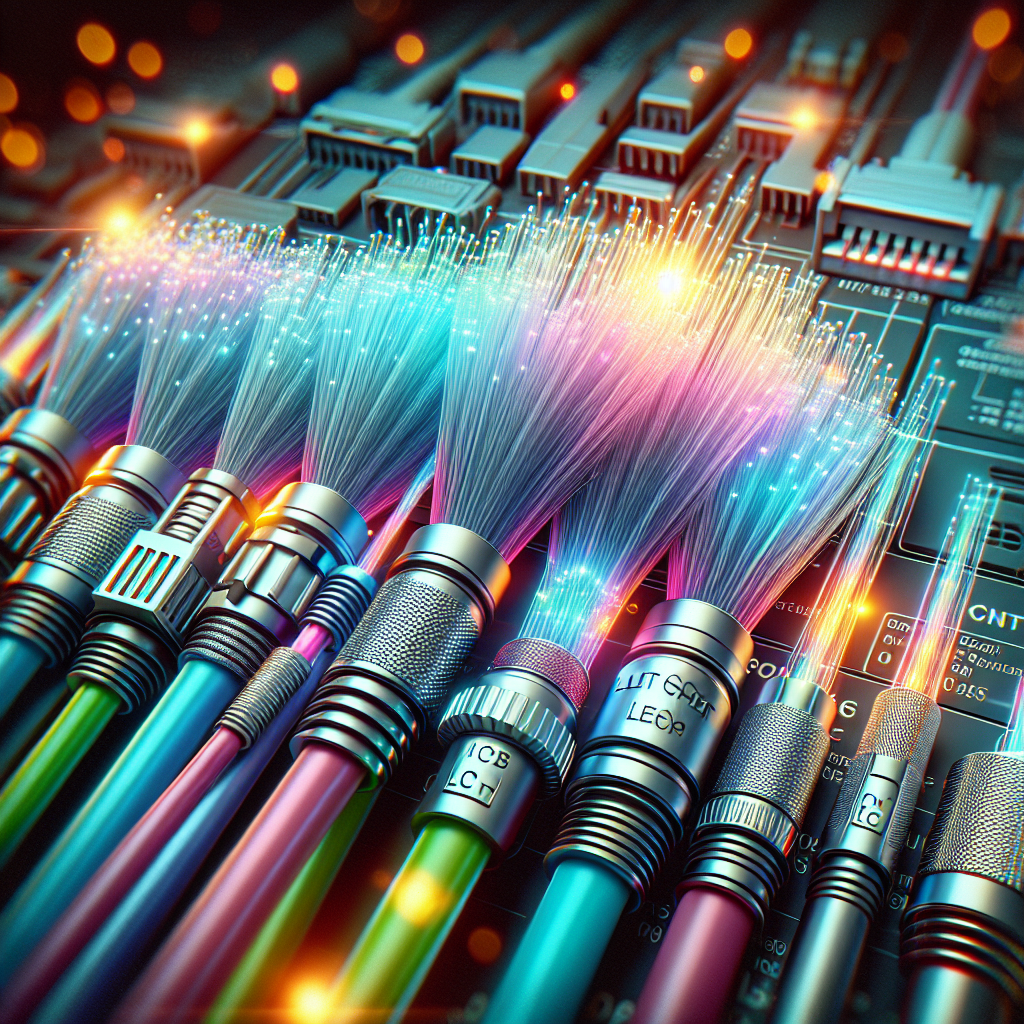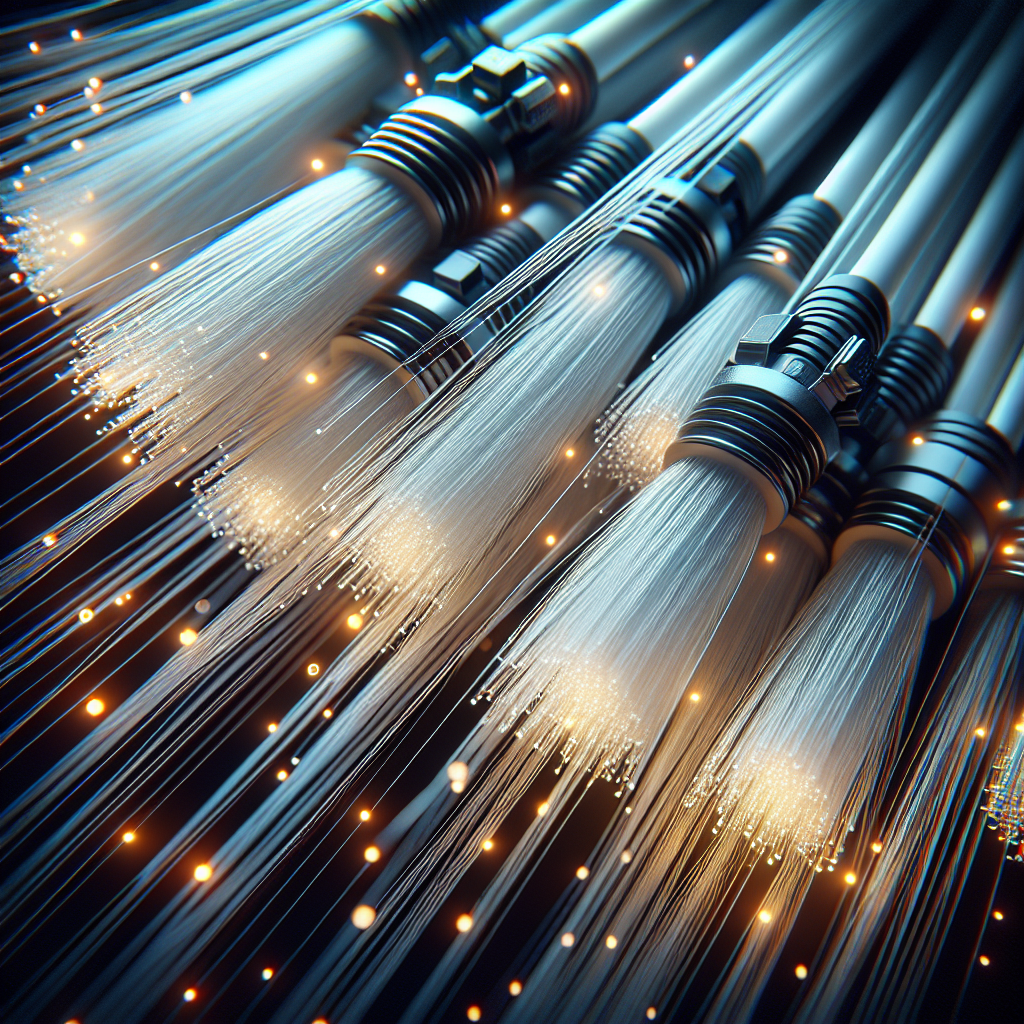In today’s digitally driven world, the demand for high-speed, reliable internet and data transmission is more critical than ever. **Fiber optic cables** have emerged as the backbone of modern communication systems, offering unparalleled speed and bandwidth capabilities. These cables use light to transmit data, making them incredibly efficient compared to traditional copper wires.
*Fiber optic cables* are composed of thin strands of glass or plastic fibers, each about the diameter of a human hair. These fibers are capable of carrying vast amounts of data over long distances with minimal loss of signal. This makes them ideal for various applications, from telecommunications and internet services to medical imaging and military communications.
Understanding the differences between various types of fiber optic connectors, such as **LC** (Lucent Connector) and **SC** (Subscriber Connector), is crucial for optimizing performance and ensuring compatibility with your infrastructure.
Visit our website to learn more and get started today! Click here.
Understanding LC Connectors
The **LC (Lucent Connector)** is a small form-factor connector known for its compact size and high performance. Developed by Lucent Technologies, the LC connector is widely used in high-density applications due to its compact design. The connector features a 1.25mm ferrule, which is half the size of the standard SC connector’s ferrule.
One of the key advantages of LC connectors is their ability to fit more connectors into a given space, making them ideal for data centers and telecommunications closets where space is often at a premium. This small size does not compromise performance; LC connectors are known for their excellent loss characteristics and high reliability.
LC connectors are also designed with a latch mechanism that provides a secure connection while allowing for easy insertion and removal. This makes them user-friendly and reduces the risk of accidental disconnection. The connector’s **push-pull design** further enhances its usability, particularly in environments where quick and reliable connections are essential.
Given these attributes, LC connectors are frequently used in gigabit and 10-gigabit Ethernet, as well as in high-speed fiber channel networks. Their versatility and performance make them a popular choice for both enterprise and residential installations.
Exploring SC Connectors
**SC (Subscriber Connector)** connectors are among the most widely used fiber optic connectors in the industry. Developed by Nippon Telegraph and Telephone (NTT), SC connectors are known for their **push-pull** coupling mechanism, which ensures a secure and straightforward connection. Each SC connector features a 2.5mm ferrule that provides a robust and reliable connection.
One of the primary advantages of SC connectors is their simplicity and ease of use. The push-pull design allows for quick and easy insertion and removal, making SC connectors a preferred choice in environments where frequent changes to the network are required. This is particularly beneficial in telecommunications and data communications settings where reliability and ease of maintenance are crucial.
SC connectors also offer excellent performance characteristics. They are known for their low insertion loss and high return loss, which are critical for maintaining the integrity of the optical signal. These performance metrics make SC connectors suitable for a wide range of applications, including **datacom, telecom, and CATV networks**.
In addition to their performance and ease of use, SC connectors are also highly durable. They are designed to withstand repeated connections and disconnections without degradation in performance. This durability makes SC connectors an excellent choice for installations where longevity and reliability are paramount.
Overall, SC connectors are a versatile and reliable option for fiber optic networks. Their combination of performance, ease of use, and durability make them an enduring choice for both commercial and residential applications.
Comparing LC and SC Connectors
When comparing **LC (Lucent Connector)** and **SC (Subscriber Connector)** connectors, several factors come into play that can influence your choice based on specific needs and applications. Both types of connectors have unique attributes that make them suitable for varying scenarios in fiber optic networks.
Size and Design: One of the most noticeable differences is size. LC connectors are smaller than SC connectors, using a 1.25mm ferrule compared to the 2.5mm ferrule of SC connectors. This compact size makes LC connectors ideal for high-density applications where space is at a premium, such as in data centers and rack-mounted installations.
Ease of Use: SC connectors are known for their push-pull design that simplifies the process of connecting and disconnecting fibers. This design reduces the risk of fiber damage during handling. On the other hand, LC connectors use a latch mechanism similar to RJ-45 connectors, providing a secure connection that can be easily disengaged when needed.
Performance: Both connectors offer excellent performance in terms of insertion loss and return loss, crucial for maintaining signal integrity. However, LC connectors are often favored in environments requiring higher performance due to their smaller size, which can lead to lower insertion loss.
Applications: LC connectors are widely used in high-density environments, such as **telecom rooms, data centers, and enterprise networks**, where space savings and high performance are critical. SC connectors, with their robust and simple design, are frequently used in **telecommunications and CATV networks**, where ease of use and reliability are paramount.
In essence, the choice between LC and SC connectors should be guided by the specific requirements of your network infrastructure. If space and high performance are your main concerns, LC connectors are likely the better option. Conversely, if ease of use and durability are more critical, SC connectors may be the ideal choice.
Applications and Use Cases
**Fiber optic cables**, particularly those equipped with LC and SC connectors, are integral to a wide range of applications and use cases in today’s digital landscape. These applications highlight the versatility and critical importance of choosing the right connector type for your specific needs.
Data Centers: In **data centers**, where space is at a premium and high-density connections are essential, LC connectors are the preferred choice. Their compact size allows for more connections in a smaller area, facilitating efficient management of extensive networks. The low insertion loss of LC connectors also ensures minimal signal degradation, critical in environments that demand high performance.
Telecommunications: In the **telecommunications industry**, both LC and SC connectors find extensive use. SC connectors, with their larger size and robust push-pull design, are often employed in telecommunications rooms and backbone cabling. They provide reliable and easy-to-manage connections, important for maintaining the integrity of communication networks.
Enterprise Networks: **Enterprise networks** benefit significantly from the high-density capabilities of LC connectors. These networks often require extensive cabling within confined spaces, such as server rooms and network closets, making LC connectors an ideal choice. Their secure latch mechanism ensures stable connections, reducing the risk of disconnections that could disrupt business operations.
CATV Networks: In **CATV (Cable Television) networks**, SC connectors are frequently used due to their durability and ease of use. The push-pull mechanism allows for quick and secure connections, which is beneficial in environments where cables are often reconfigured or maintained. SC connectors provide the reliability needed to ensure consistent signal delivery to end-users.
Military and Aerospace: The **military and aerospace sectors** often require highly reliable and robust fiber optic connections. Both LC and SC connectors are used depending on the specific requirements of the application. LC connectors might be chosen for applications where space and weight are critical, while SC connectors might be preferred for their straightforward handling and robust design.
In conclusion, understanding the specific needs of your application or use case is crucial when choosing between LC and SC connectors. Each type offers distinct advantages that can enhance the performance and reliability of your fiber optic network, ensuring you meet the demands of your industry effectively.
Choosing the Right Connector
When it comes to choosing the right connector for your fiber optic network, understanding the specific requirements and constraints of your project is paramount. Both **LC and SC connectors** offer unique advantages, and the best choice often depends on the particular application, environment, and performance needs.
Density and Space Constraints: If your project involves high-density environments, such as **data centers** or **enterprise networks**, LC connectors are typically the better choice. Their smaller form factor allows for more connections in a limited space, making them ideal for environments where space efficiency is a priority.
Simplicity and Durability: For applications that require easy handling and robust connections, such as **telecommunications** and **CATV networks**, SC connectors may be more suitable. Their larger size and straightforward push-pull mechanism provide ease of use and durability, making them well-suited for environments where cables are frequently handled and reconfigured.
Performance and Reliability: Both LC and SC connectors offer low insertion loss and high return loss, which are critical for maintaining signal integrity. However, the choice between them can also depend on the specific performance requirements of your network. For instance, LC connectors might be preferred in applications where minimal signal loss is crucial, such as in long-haul telecommunications or high-speed data transfer.
Cost Considerations: The cost can also be a deciding factor. While LC connectors might be slightly more expensive due to their compact design and precision, they can provide cost savings in high-density applications by reducing the need for additional infrastructure. SC connectors, being more straightforward in design, might offer cost advantages in less space-constrained environments.
Future-Proofing: Consider the future growth of your network. LC connectors, with their high-density capabilities, might offer better scalability for expanding networks. Ensuring your network infrastructure can handle future demands can save time and money in the long run.
Ultimately, the best connector for your fiber optic network will align with your specific needs and goals. Carefully assess the demands of your application, consider the pros and cons of each connector type, and make an informed decision that supports both current and future requirements.
Visit our website to learn more and get started today! Click here.





